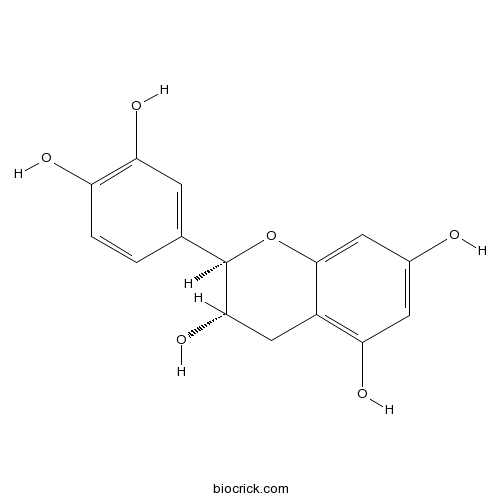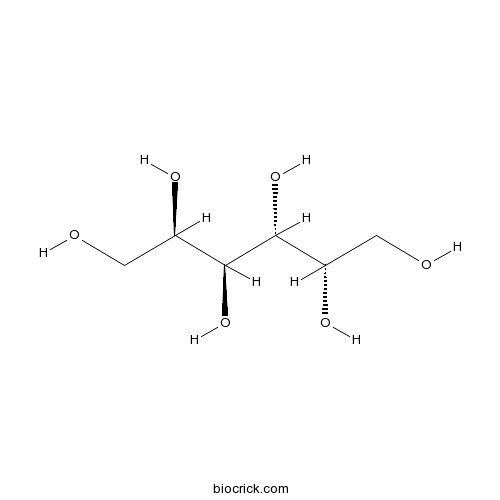Celastrus angulatus
Celastrus angulatus
1. The products in our compound library are selected from thousands of unique natural products; 2. It has the characteristics of diverse structure, diverse sources and wide coverage of activities; 3. Provide information on the activity of products from major journals, patents and research reports around the world, providing theoretical direction and research basis for further research and screening; 4. Free combination according to the type, source, target and disease of natural product; 5. The compound powder is placed in a covered tube and then discharged into a 10 x 10 cryostat; 6. Transport in ice pack or dry ice pack. Please store it at -20 °C as soon as possible after receiving the product, and use it as soon as possible after opening.
Natural products/compounds from Celastrus angulatus
- Cat.No. Product Name CAS Number COA
-
BCN1688
Catechin154-23-4
Instructions

-
BCN8153
Dulcitol608-66-2
Instructions

Effects of Celangulin IV and V From Celastrus angulatus Maxim on Na+/K+-ATPase Activities of the Oriental Armyworm (Lepidoptera: Noctuidae).[Pubmed: 27324586]
Na(+)/K(+)-ATPase (sodium pump) is an important target for the development of botanical pesticide as it is responsible for transforming chemical energy in ATP to osmotic work and maintaining electrochemical Na(+ )and K(+ )gradients across the cell membrane of most animal cells. Celangulin IV (C-IV) and V (C-V), which are isolated from the root bark of Celastrus angulatus, are the major active ingredients of this insecticidal plant. The activities of C-IV and C-V on Na(+)/K(+)-ATPase were investigated by ultramicro measuring method to evaluate the effects of C-IV and C-V on Na(+)/K(+)-ATPase activities of the brain from the fifth Mythimna separata larvae and to discuss the insecticidal mechanism of C-IV and C-V. Results indicate that inhibitory activities of Na(+)/K(+)-ATPase by C-IV and C-V possess an obvious concentration-dependent in vitro. Compared with C-IV, the inhibition of C-V on Na(+)/K(+)-ATPase was not striking. In vivo, at a concentration of 25 mg/liter, the inhibition ratio of C-IV on Na(+)/K(+)-ATPase activity from the brain in narcosis and recovery period was more remarkable than that of C-V. Furthermore, the insects were fed with different mixture ratios of C-IV and C-V. The inhibition extent of Na(+)/K(+)-ATPase activity was corresponded with the dose of C-IV. However, C-V had no notable effects. This finding may mean that the mechanism of action of C-IV and C-V on Na(+)/K(+)-ATPase were different. Na(+)/K -ATPase may be an action target of C-IV and C-V.
Validation of the Target Protein of Insecticidal Dihydroagarofuran Sesquiterpene Polyesters.[Pubmed: 26999207]
A series of insecticidal dihydroagarofuran sesquiterpene polyesters were isolated from the root bark of Chinese bittersweet (Celastrus angulatus Max). A previous study indicated that these compounds affect the digestive system of insects, and aminopeptidase N3 and V-ATPase have been identified as the most putative target proteins by affinity chromatography. In this study, the correlation between the affinity of the compounds to subunit H and the insecticidal activity or inhibitory effect on the activity of V-ATPase was analyzed to validate the target protein. Results indicated that the subunit H of V-ATPase was the target protein of the insecticidal compounds. In addition, the possible mechanism of action of the compounds was discussed. The results provide new ideas for developing pesticides acting on V-ATPase of insects.
Modulation of the Ca(2+) signaling pathway by celangulin I in the central neurons of Spodoptera exigua.[Pubmed: 26821661]
Celangulin I is an insecticidal component isolated from Chinese bittersweet Celastrus angulatus. The present study explored the possible effects of celangulin I on the calcium signaling pathway, especially on the L-type Ca(2+) channel and the calcium channels in the endoplasmic reticulum in the central neurons isolated from the third instar larvae of Spodoptera exigua using whole-cell patch-clamp and calcium imaging technique. The results showed that celangulin I could activate the high voltage-gated calcium channel at the concentration of 150μM. The peak currents were increased by 17% of the initial value at the end of the 10-min recording after treated with celangulin I. The rises of intracellular calcium ion concentration ([Ca(2+)]i) in neurons treated by celangulin I showed that the effects of celangulin I were concentration-dependent. Activation of the RyRs by ryanodine decreased the calcium release induced by celangulin I, indicating that celangulin I exerts effect on insect RyRs. Furthermore, we also provided evidence for the first time that celangulin I activates inositol 1,4,5-trisphosphate (IP3) sensitive intracellular calcium release channels in the endoplasmic reticulum third instar larvae neurons of S. exigua. Plausibly, these experimental results can explain the characteristic symptoms of anesthesia and paralysis in celangulin I treated insects.
Natural β-Dihydroagarofuran-Type Sesquiterpenoids as Cognition-Enhancing and Neuroprotective Agents from Medicinal Plants of the Genus Celastrus.[Pubmed: 26295746]
Alzheimer's disease (AD) is an irreversible, multifaceted, and progressive neurodegenerative disorder. Over the past 30 years, the search for anti-AD drugs has been primarily based on the cholinergic deficiency hypothesis and/or the β-amyloid (Aβ) cascade hypothesis. In this study, we report the identification of 16 new and 38 known β-dihydroagarofuran-type sesquiterpenoids from Celastrus flagellaris and Celastrus angulatus. The β-dihydroagarofuran-type sesquiterpenoids 58, 59, 61, and 63 significantly attenuated scopolamine-induced prolonged escape latency and increased number of errors compared with the control group. At 10 μM, 21 of the 62 tested β-dihydroagarofuran-type sesquiterpenoids rescued Aβ25-35-induced SH-SY5Y cells from viability reduction, which increased the cell viability from 64.6% for the model to more than 74.0%. The majority of the β-dihydroagarofuran-type sesquiterpenoids with ester groups exhibited stronger activity than those with free hydroxy groups or without substituents at the same positions. These results identified a new chemical skeleton as drug lead for the investigation of novel therapeutic agents against AD.
Simultaneous identification of multiple celangulins from the root bark of Celastrus angulatus using high-performance liquid chromatography-diode array detector-electrospray ionisation-tandem mass spectrometry.[Pubmed: 21520311]
Celangulins are a small family of β-dihydroagarofuran sesquiterpenoids endowed with diverse polyoxygenated polyol esters and various biological properties. Since our research focuses on celangulins, the development of rapid and sensitive online analytical methods to analyse and characterise them is of great significance.
Two new sesquiterpene polyol esters from the root barks of Celastrus angulatus.[Pubmed: 21462033]
Angulatin F (1) and angulatin I (2), two new sesquiterpene polyol esters, were isolated from the root barks of Celastrus angulatus, together with six known compounds 1β,2β-diacetoxy-4α,6α-dihydroxy-8α-isobutanoyloxy-9β-benzoyloxy-15-(α-methyl) butanoyloxy-β-dihydroagrofuran (3), angulatin A (4), angulatin B (5), celangulatin E (6), 1β,2β,15-triacetoxy-4α,6α-dihydroxy-8α-isobutanoyloxy-9β-benzoyloxy-β-dihydroagrofuran (7), and celangulin I (8). The structures of 1 and 2 were elucidated as 1β,2β,6α,15-tetraacetoxy-4α-hydroxy-8β,9α-difuroyloxy-β-dihydroagrofuran and 1β,2β,6α,8β,15-pentaacetoxy-4α-hydroxy-9β-furoyloxy-β-dihydroagrofuran by spectroscopic means.
Molecular analyses of the Chinese herb Leigongteng (Tripterygium wilfordii Hook.f.).[Pubmed: 21094504]
Tripterygium wilfordii Hook.f., known as Leigongteng (Thunder God Vine) in traditional Chinese medicine, has attracted much attention for its applications in relieving autoimmune disorders such as rheumatoid arthritis and systemic lupus erythematosus, and for treating cancer. Molecular analyses of the ITS and 5S rDNA sequences indicate that T. hypoglaucum and T. doianum are not distinct from T. wilfordii, while T. regelii should be recognized as a separate species. The results also demonstrate potential value of rDNA sequence data in forensic detection of adulterants derived from Celastrus angulatus in commercial samples of Leigongteng.
Ultrastructural effects of Celangulin V on midgut cells of the oriental armyworm, Mythimna separata walker (Lepidoptera: Noctuidae).[Pubmed: 20970855]
The ultrastructural effects of ingested Celangulin V (CA-V), an insecticidal component extracted from the root bark of Chinese bittersweet (Celastrus angulatus Maxim), on the midgut epithelial cells of the oriental armyworm larva (Mythimna separata Walker) were studied. Transmission electron microscopy showed that CA-V could induce a severe, time-dependent cytotoxicity of the midgut epithelial cells, which had large cytoplasmic spaces, disrupted microvilli and swollen mitochondria. The cisternae of the rough endoplasmic reticulum were excessively dilated, vesiculated and then fragmented. The nuclei were pycnotic and contained one or two divided nucleoli and agglomerated chromatin. Numerous lysosome-like vacuoles and secretion granules were observed. Finally, the CA-V resulted in cell death by necrosis with plasma membrane lysis and the cytoplasm content leakage into the migdut lumen.


